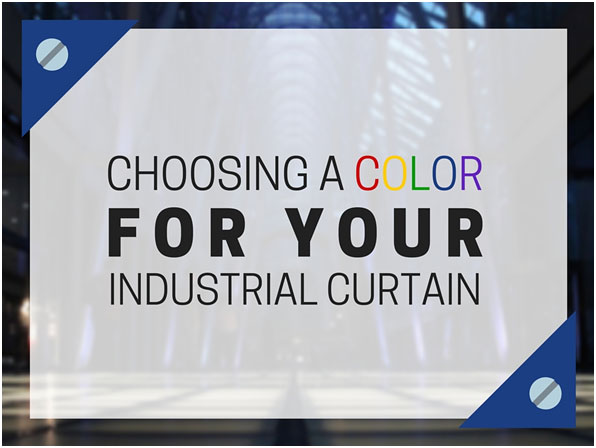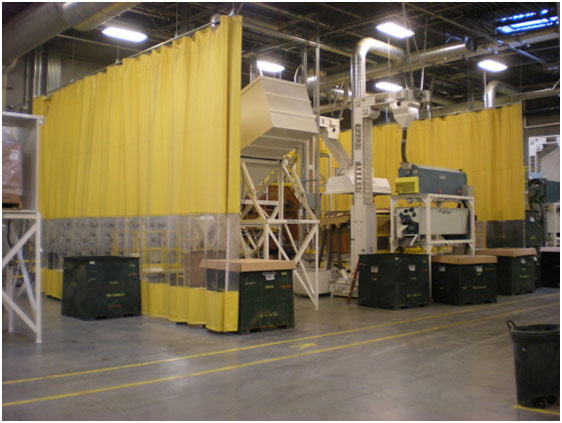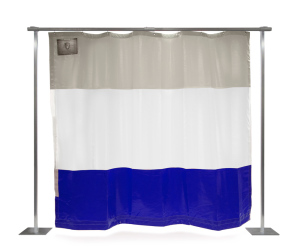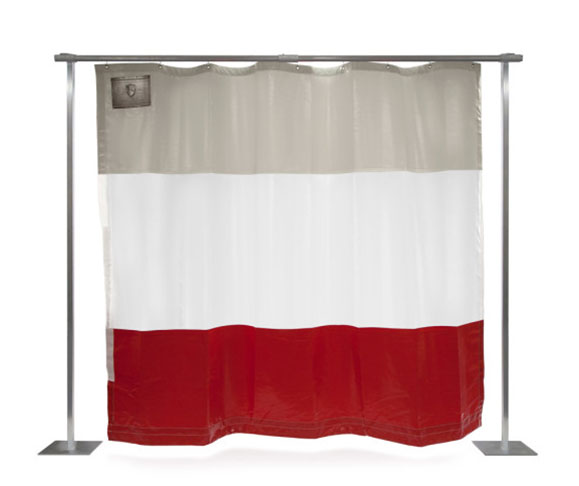American Made, Iron Clad Protected - Discover the Industries Best Warranty.

Blog
Choosing a Color for Your Industrial Curtain

The color of your industrial curtain isn’t just for show. Choosing the right color can indicate certain levels of hazard to your crew and prevent workplace injury. Depending on the trade, your industrial curtain may be decorative.
Far more applications require color coding to meet regulation and inform workers about the area that has been curtained.
Important Color Applications
Some colors are used as industry standards, but it is always wise to ask your company about color coding to avoid mistakenly marking a hazardous area as non-hazardous.
Standard associations place red and yellow colors at the more dangerous levels, while cooler colors may be used for a variety of applications.
Take, for instance, welding. The color of welding screens serves as more than an indicator to outside workers. The color can actually affect the light of the welding on the worker’s and any bystanders’ eyes.
The screens absorb UV radiation, and the color is very important because different colors absorb different radiation levels. Colors associated with welding include:
- This color affords the least amount of protection, and is suitable for low to medium amperage applications. A work environment curtained in yellow is bright and provides professionals with a visible work area.
- Orange/Red. Medium welding applications benefit from this color range as it reflects more light.
- Blue can be used in medium or high protection welding applications. The darker color blocks a lot of UV light, protecting eyes.
- Green (Shade 8). Perfect for high protection scenarios, this color has been designed to block almost all of the UV light and provides very little visibility. Those who use plasma cutting and laser welding may benefit from this UV blocking solution.
- Opaque Blue Vinyl Steel-Scrim. Steel Guard Safety’s proprietary welding curtain is great for a number of welding applications and is one of the most durable curtains on the market.
Photography and X-rays are another important application. Some technologies only work well in the absence of light. For these cases, blackout curtains are vital to imaging results.
Blackout curtains absorb all excess light, and black is generally the only color used for curtains in this field.

Industry Examples for Curtain Color
Companies that engage in a variety of activities may use a single color that matches brand standards for their curtain color needs. Blue and yellow are very commonly used in the healthcare industry. If a company needs a solution that easily displays dirt and grime, white is often used.

The automotive industry, for example, uses white in a number of applications. Breaks in traditional color patterns in a company may indicate that a zone is different or special. This neutral selection can also be customized with multiple colors.
For instance, an antique car show may want to provide protection while allowing clear views of the cars, as well. A curtain that is bordered with a transparent viewing window may be suitable for this application.
On the other hand, in healthcare settings or other, non-color coded needs, a curtain may be patterned or solid. The primary purpose of the curtain in this setting is to protect workers and patients from the spread of airborne illness or to provide privacy in open room layouts.
The primary purpose of the curtains is to be opaque and provide some resiliency to germs, while the secondary consideration will be the color or pattern used.

There are a number of applications that a customized flexible wall curtain solution can be used for. Contact Steel Guard today for more information about product solutions that will work for your unique situation.
Recent Posts
- Industrial Curtain Walls: 6 Reasons Why Manufacturing Facilities Must Have Them
- Industrial Soundproof Curtains: How to Decide Between Floor-Mounted and Ceiling-Mounted Curtains
- How to Transform a Noisy Open-Plan Office with Acoustic Baffles
- A Guide to Choosing the Best Concrete Blanket for Construction Projects
- Porch Curtains: 8 Amazing Reasons to Install These Curtains in Your Home
- Chemical Splash Curtains and Their Applications in Different Industries
- Outdoor Sound Curtains for Farms and Animals
- Construction Sound Barriers: Why Every Construction Site Should Have These?
- Industrial Blackout Curtains and Their Applications in Different Settings
- Sound Curtains for Industrial Use: How to Buy the Right One
Categories
- Accordion Fold Curtains
- Acoustic Baffles
- Agri-Shield Curtains
- Auto Body Shop Curtains
- Bio Plastics
- Industrial Divider Curtains
- Industrial Safety Products
- Insulated Curtain Walls
- Machine Guard Safety Fencing
- Mesh Curtain Screens
- Outdoor Curtains
- PVC Strip Curtains
- Soundproof Noise Blocking Curtains
- Spray Paint Booth Curtains
- Tarps
- Thermal Curtains & Covers
- Uncategorized
- Warehouse Dividers
- Welding Blankets
- Welding Curtains
- Welding Screens



